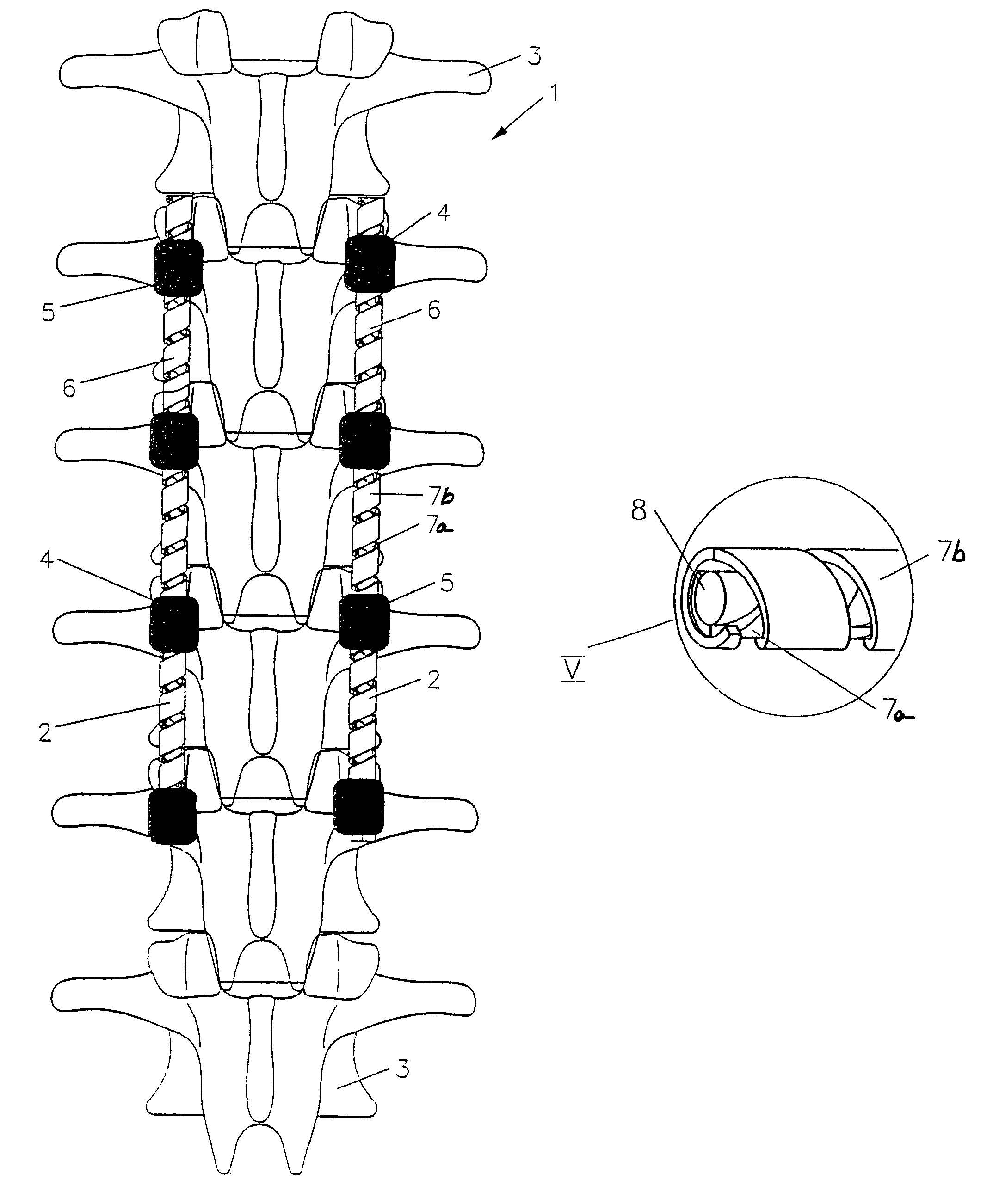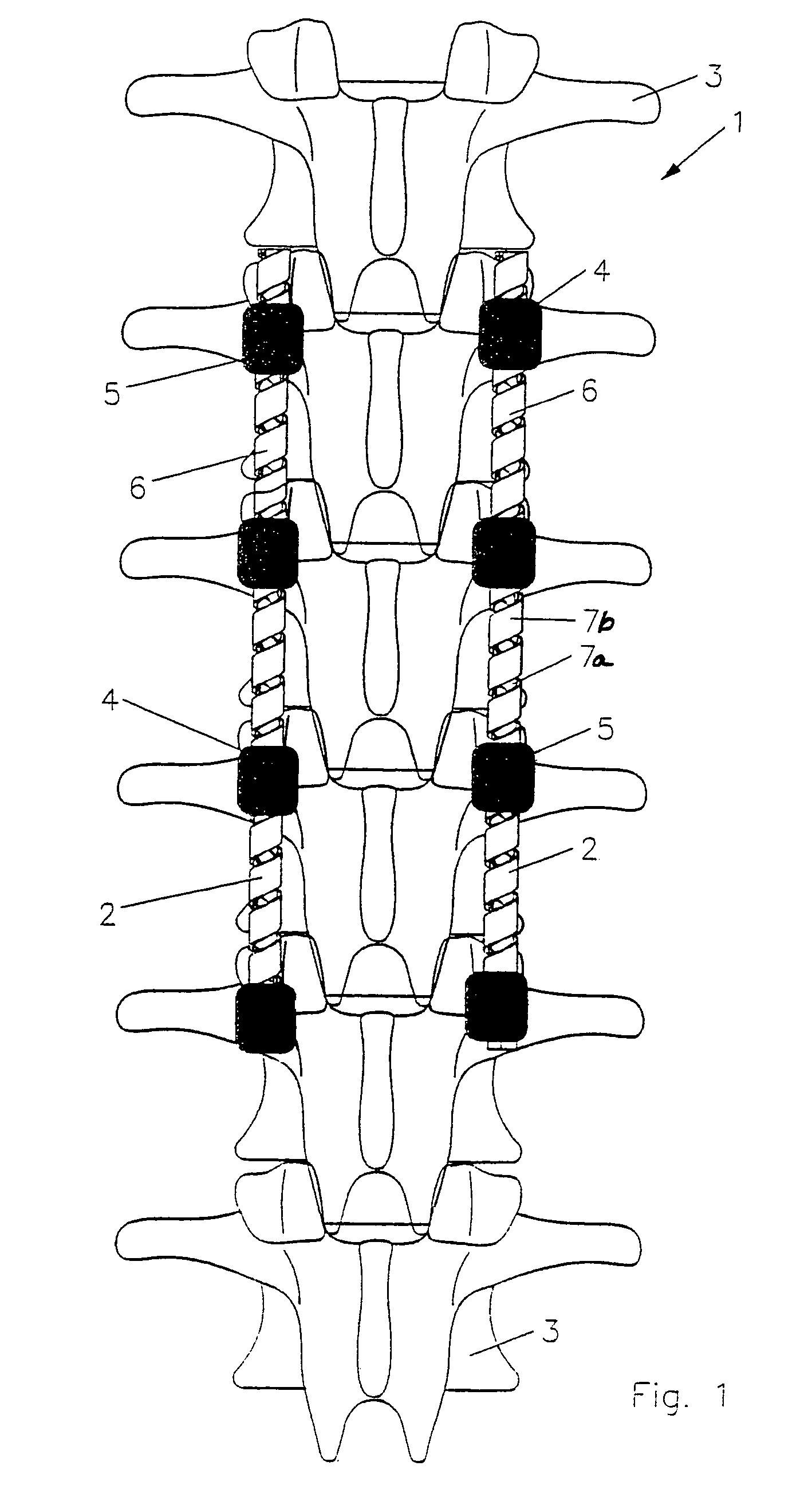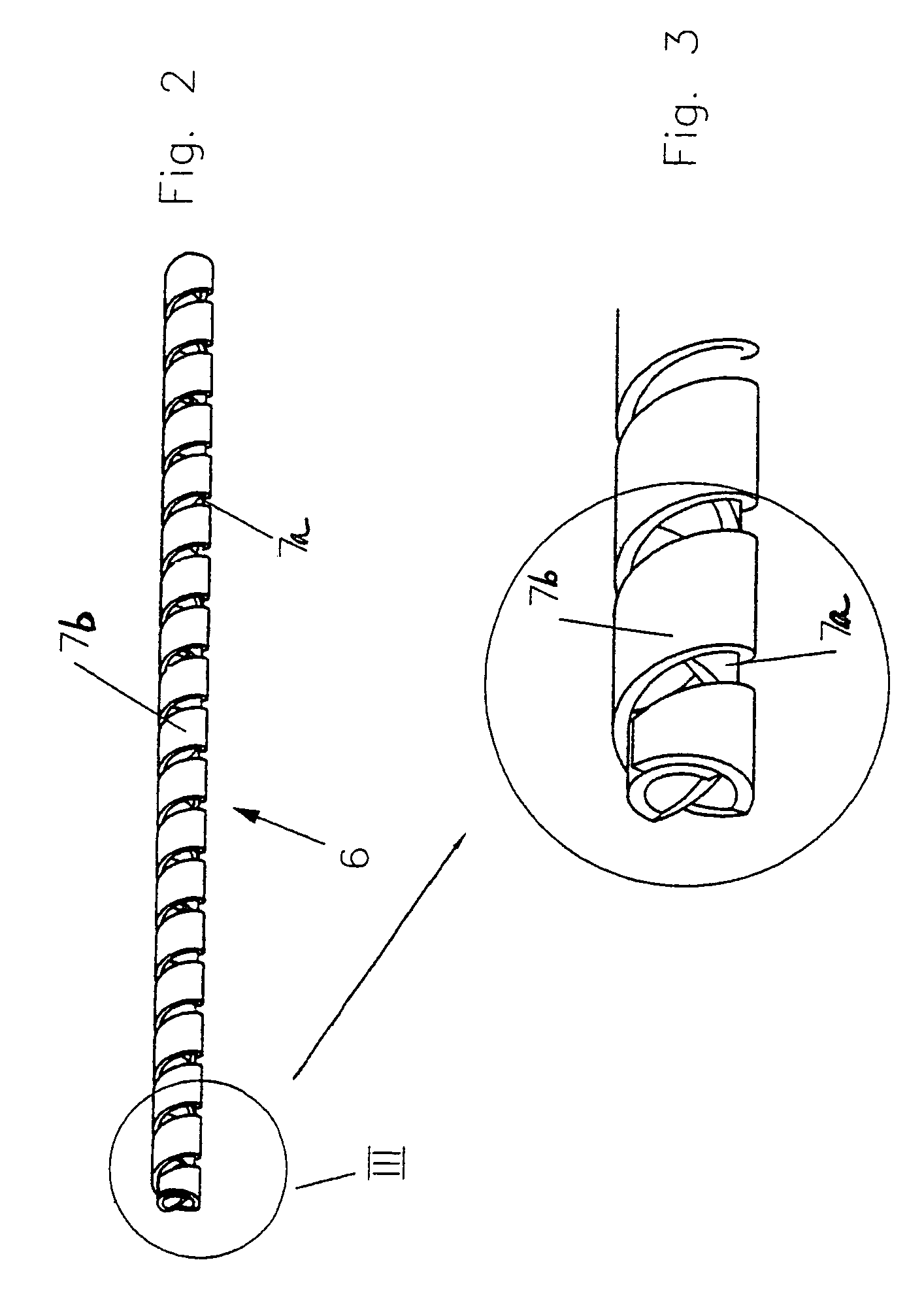Implant for correction and stabilization of the spinal column
a technology for spinal columns and implants, applied in joint implants, internal osteosynthesis, medical science, etc., can solve the problems of more degenerative diseases, more stress on adjacent regions of spinal columns, and more degenerative diseases, so as to achieve greater approximation of physiological mobility possibilities
- Summary
- Abstract
- Description
- Claims
- Application Information
AI Technical Summary
Benefits of technology
Problems solved by technology
Method used
Image
Examples
Embodiment Construction
[0025]Referring to the drawings, FIG. 1 shows a spinal column 1, which is supported in its function via two implants 2, which are used to correct and stabilize spinal column 1. These implants 2 help to hold the individual vertebrae 3 of the spinal column 1 in their anatomically correct position. Each implant 2 comprises several pedicle screws 4, as shown in the exemplary embodiment shown, as well as a connection element 6 that connects pedicle screws 4 at their screw heads 5.
[0026]Connection element 6 is formed by one or more spirals which can include an inner spiral 7a and an outer spiral 7b. The spiral windings of these spirals are arranged offset in the axial direction, following a screw line, whereby adjacent spiral windings have a distance of 0.5 mm to 2.5 mm from one another. FIG. 1 shows an example of a design that relates to the invention, in which a material thickness of 1.2 mm was chosen for the flat wire, from a range of 0.4 mm to 2.8 mm, as well as a material width of 6 ...
PUM
 Login to View More
Login to View More Abstract
Description
Claims
Application Information
 Login to View More
Login to View More - R&D
- Intellectual Property
- Life Sciences
- Materials
- Tech Scout
- Unparalleled Data Quality
- Higher Quality Content
- 60% Fewer Hallucinations
Browse by: Latest US Patents, China's latest patents, Technical Efficacy Thesaurus, Application Domain, Technology Topic, Popular Technical Reports.
© 2025 PatSnap. All rights reserved.Legal|Privacy policy|Modern Slavery Act Transparency Statement|Sitemap|About US| Contact US: help@patsnap.com



